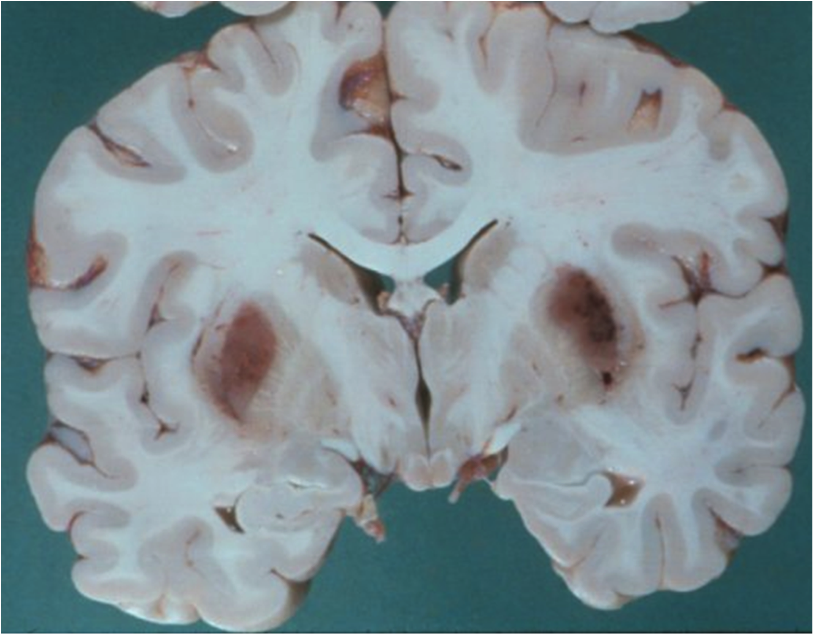Table of Contents
Definition / general | Epidemiology | Sites | Clinical features | Laboratory | Radiology description | Radiology images | Prognostic factors | Case reports | Treatment | Gross description | Gross images | Microscopic (histologic) description | Differential diagnosis | Additional referencesCite this page: Gyure K.A. Methanol. PathologyOutlines.com website. https://www.pathologyoutlines.com/topic/cnsmethanol.html. Accessed March 31st, 2025.
Definition / general
- Methanol is a clear, colorless alcohol that is commonly used in industrial products such as antifreeze and windshield wiper fluid; also perfumes, other solvents, commercial formaldehyde and illegally made alcohol
- Toxicity occurs due to intentional overdose (as a substitute for ethanol) or accidental ingestion
Epidemiology
- Approximately 1,000 - 2,000 cases of methanol poisoning are reported in the United States each year
Sites
- Poisoning affects putamen and optic nerves
Clinical features
- Headache, abdominal pain, nausea, vomiting, mental status changes
- Loss of vision with hyperemia of the optic discs and a reduced papillary response to light
Laboratory
- Elevated serum methanol levels
- Metabolic acidosis: decreased total CO2 with increased anion gap
Radiology description
- Bilateral necrosis of putamen with or without hemorrhage
- Contrast enhancement of the retrobulbar segment of the optic nerves
Radiology images
Prognostic factors
- Permanent visual impairment occurs in some survivors of methanol poisoning
Case reports
- 35 year old men (J Postgrad Med 2013;59:243, J Emerg Trauma Shock 2011;4:300)
- 49 year old man with vision loss after accidental methanol intoxication (BMC Res Notes 2013;6:479)
Treatment
- Delays methanol metabolism until methanol is eliminated from body either naturally or via dialysis
- Ethanol
- Fomepizole: inhibitor of alcohol dehydrogenase
Gross description
- Hemorrhagic necrosis of putamina
Microscopic (histologic) description
- Degeneration of retinal ganglion cells
Differential diagnosis
- Carbon monoxide intoxication: bilateral necrosis of globus pallidus









